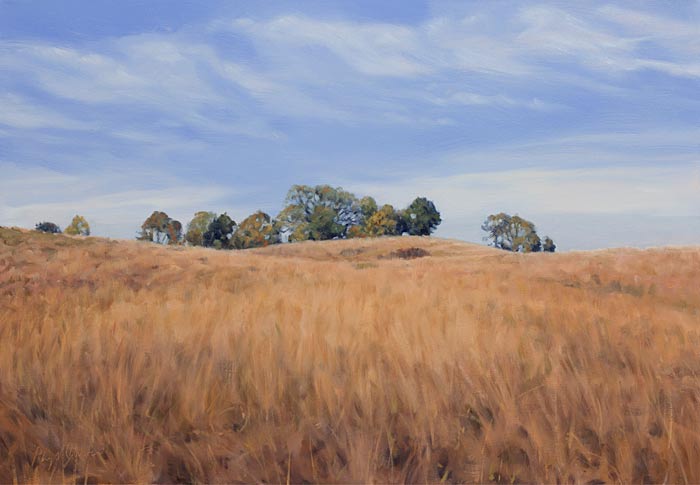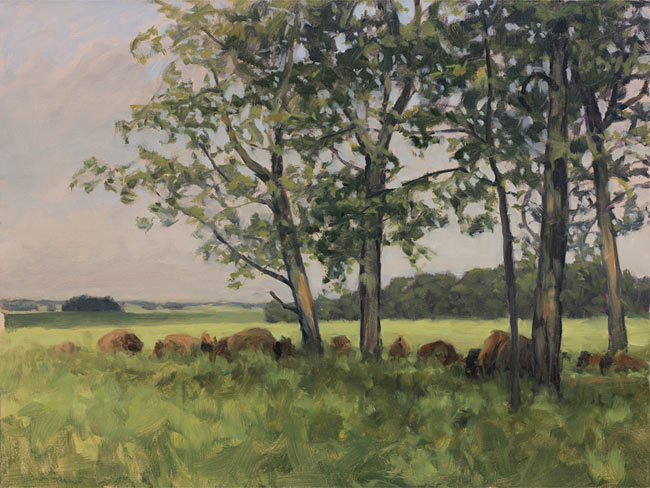lessons 5 -- visit to the nachusa grasslands
Lesson 5. The sky is the limit
The Chicago-style methods of restoration can be applied to sites smaller than 1 acre or they can be scaled up to cover several square miles. It can be done in the Southeast as well and SGI will lead the way. Let's dream big and find a way to rebuild grasslands that stretch to the horizon.
On Day 2 of my trip, I traveled two hours west of Chicago to the Nachusa Grasslands managed by The Nature Conservancy. My host at Nachusa was Cody Considine, a restoration ecologist for TNC. We hopped in his pickup truck and he drove me out across the vast expanse of rolling prairie so beautifully captured by Philip Juras's paintings. Nachusa happens to be one of his favorite places to paint and after my visit I certainly can see why.
This 3,700 acre re-created tallgrass prairie has Bison roaming across 1,500 acres. I could not believe that when I was just five years old, in 1983, that this rich prairie that spread before me to the horizon had been rolling fields of corn and that almost everything I was viewing had been rebuilt, except for a few hilltop natural remnants in rocky soil.
Astonishingly, many of the same methods used to rebuild small-scale prairies in the Chicago suburbs were used to rebuild Nachusa. As we toured the site, it was neat to round a corner and find a small group of seven or eight volunteers harvesting seeds of prairie plants in some remote corner of the preserve. Even though Nachusa is two hours from Chicago, they still have a strong team of local volunteers who show up faithfully to help ensure that Nachusa thrives for decades to come. This provides hope that in more rural areas of the Southeast, such as eastern Arkansas's Grand Prairie (down from 500,000 acres historically to now just 375 acres) or south Georgia's remnant chalk prairies.
Volunteers hand-collecting seeds from prairie species.
Cody explained how their team of volunteers are empowered and entrusted to take on leadership roles. For example, one husband and wife volunteer team has "adopted" a few acres of Nachusa. Under this model, they assume something akin to ownership of their small plot. After receiving some up-front training and instruction when they first started years ago, they now manage and plan all of the activities on their plot. This means they collect seeds from it, they help to control invasive plants, they choose which species to re-seed, and then they work to spread seeds using the overseeding method.
Undoubtedly, a lot of people might be uncomfortable with allowing non-professionals to take on such leadership roles, but after seeing it in action, I am convinced that this is an important and overlooked strategy that we must adopt for managing certain areas. The key is providing proper educational training on the front end.
Lesson 5: The fifth and final lesson I learned from my whirlwind Chicago tour is that high-quality grassland restoration driven by empowered and trained volunteers can absolutely be scaled up from tiny remnants of less than acre to tracts covering several square miles...it can be done...and it will be done.








